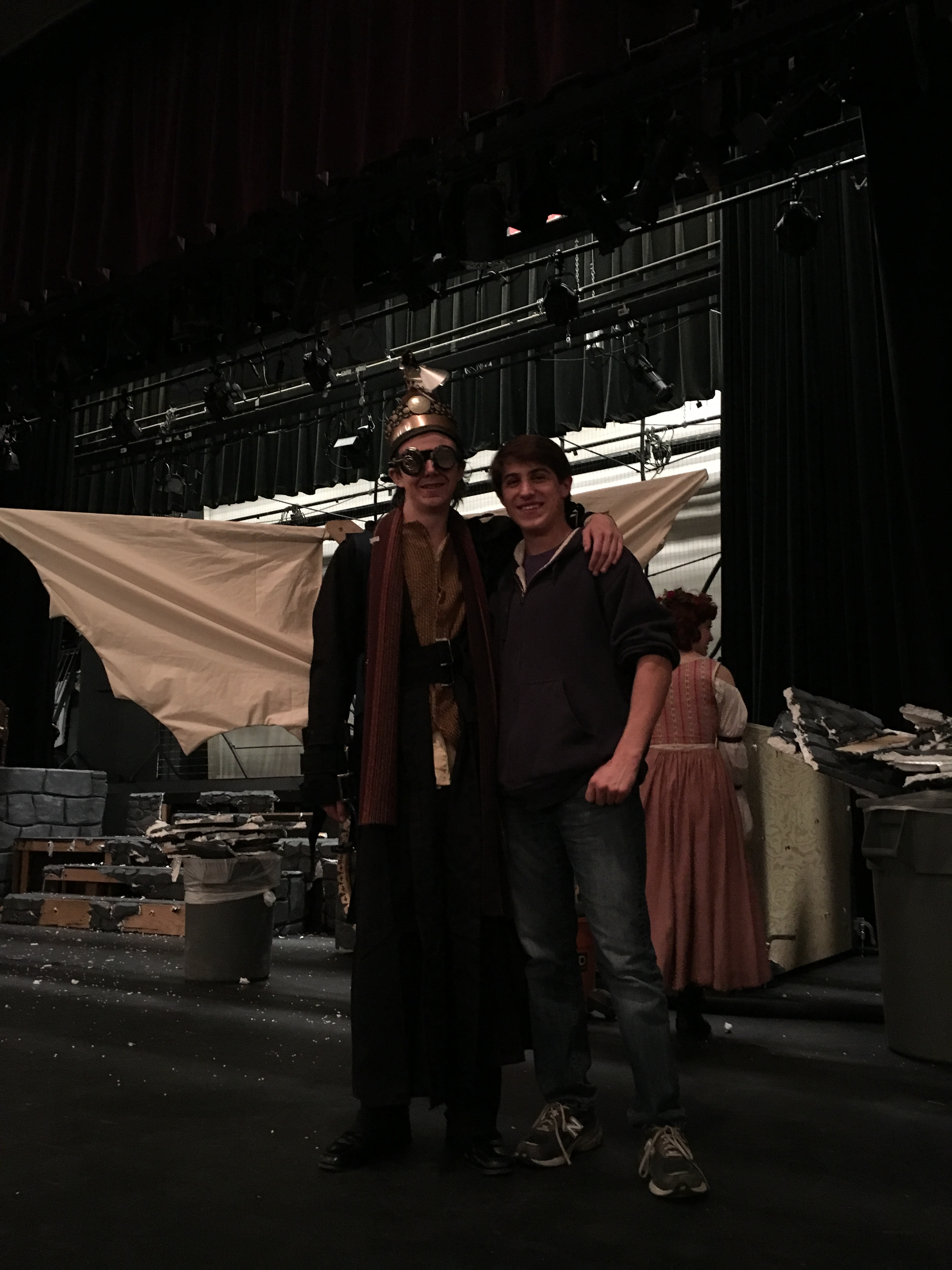Pneumatic Wings
Project Background
As a member of the Boulder High School Robotics team, “The Landsharks”, I was apprached by the faculty sponsor of our team, and the theater department, to create a prop for the upcoming production of Beauty and the Beast. The theater department wanted a moving prop for the character Maurice’s flying machine. If one does not know the plot of Beauty and the Beast, the main character’s father is an inventor. He gets lost in the woods on his way to demonstrate his newest invention, a flying machine. While he is lost, he is eventually captured by the titular Beast, and imprisoned in the beast’s estate. The plot is beside the point: the fact of the matter was that the theater department was interested in engaging the robotics club to make a realistic looking flying machine that would be shown off in three scenes of the play. My director put me to the task, and I was excited to work solo for the first time on a real technical project.
Unfortunately, as I worked on this project back in 2016, I have lost access to the old CAD files that I generated for this project. I plan on recreating the CAD for this from my memory and from images of the mechanism and including that on this page in the future.

Difficulties
We decided early on in the project to use pneumatics to actuate the wings. There where several reasons for this, the first reason was that the previous semester I had spent a fair amount of time learning how to design pneumatic systems for the teams main robot, and my director and I thought it would be a good chance to apply that knowledge I had gained. The second reason was that the theater department, my client, wanted the device to have a steam-punk theme. The clients liked that the prop, when it actuated, would release compressed air and create a hissing sound that was reminiscent of steam machinery. Pneumatic actuators imposed many restrictions to my design, for instance, weight, durability, actuation speed, and repeat actuations, were all aspects of the design that where affected by our chosen actuation method.
For the actor to be able to move unrestricted, we needed to keep the system lightweight and as compact as possible. This had to be balanced with the required amount of air tanks needed to actuate the required number of times. We achieved this by, buying higher capacity tanks that where made out of a lightweight plastic to replace our heavier and smaller metal tanks. This may seem like an obvious choice, but this was my very first solo technical project. Every difficulty, every design decision was the first time I was having to navigate that situation.
This was especially true in dealing with my clients. Eachtime, I spoke to the clients they had different requirements and new ideas for additions to the project. Any engineer knows to be wary of project creep, but no-one wants to creep a project like an enthusiastic theater director. Learning how to advise a client on reasonable project directions was one of the most difficult parts of this project.
However, it all paid off when I was able to see a fully functional product on the stage. I knew that was a creation of my own design, and I was so proud to see it in action!
Lessons Learned
This project was the very beginning of the development of my technical skills.
Technical Skills
- How to use Power tools: Drill Press, Miter Saw, Jig Saw, CNC Router
- Solidworks - My very first CAD model was made for this project
- 3D printing - Printed a conector from the pneumatic cylinder to wing mechanism
- Designing Pneumatic systems
Soft Skills
The most valuable skill I learned from this project, was how to work with a client. I learned how to ask the right questions, that allowed me to translate the needs and wants of the client, to technical specifications of the mechanism. I also learned what information is relevant to a client. In this case the client did not care about the actual mechanism, they cared about the artistic elements of the prop, the ease of use, and its ability to function reliably. When I presented the project, these where the elements I spent the most time explaining and demonstrating to the clients. The intimate details of the mechanics I saved for the robotics club director, to whom that was important and relevant information.